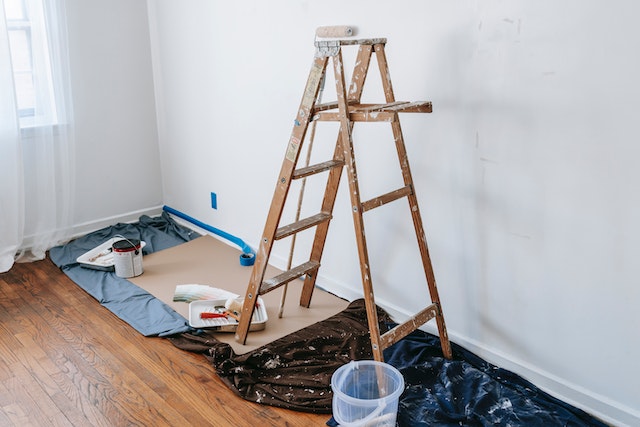
- Distinguish Between Wear and Tear and Damage: Recognize that normal wear and tear includes minor issues like small carpet stains or faded paint due to everyday use, while damage involves more significant problems such as broken fixtures or large holes in walls caused by misuse or neglect.
- Document Property Condition: Conduct thorough move-in and move-out inspections, taking detailed notes and photographs to accurately assess any changes and address potential disputes over security deposit deductions.
- Understand Security Deposit Deductions: Be aware that security deposits can be used to cover damages beyond normal wear and tear, such as broken windows or missing fixtures, but not for routine maintenance or minor issues resulting from regular use.
As a rental property owner, one of the most common and often confusing topics you'll deal with is determining what counts as "normal wear and tear" versus actual damage caused by a resident.
This distinction is crucial, especially when it's time to return a security deposit or assess a property after a resident moves out. Misunderstanding this concept can lead to disputes, lost time, and even legal complications.
Below is a helpful guide from Brentwood Square Management Services, Inc. to help you understand and distinguish normal wear and tear from actual damage. This is an essential step before making decisions about security deposit deductions or post-tenancy repairs.
Understanding Normal Wear and Tear
Normal wear and tear refers to the gradual and expected deterioration of a property and its fixtures due to everyday use over time.
It's what happens naturally as people live in and use a space. These are not the results of negligence, abuse, or misuse, but simply the aging of the property despite reasonable care by the resident.
For example, minor scuffs on walls from furniture, carpet thinning in high-traffic areas, or slight fading of paint from sunlight are all typical signs of normal wear. These are things a landlord should expect and plan to refresh as part of routine maintenance between tenancies.

Damage vs. Wear and Tear
The main point of confusion often arises when landlords try to determine whether an issue is normal wear and tear or actual damage. This is where thorough tenant screening can help, as it ensures residents understand the expectations for care and maintenance from the start.
Unlike normal wear, damage results from misuse, neglect, or accidents and usually requires repair or replacement beyond what’s considered routine.
Common Examples: What to Expect
To provide more clarity, here are some specific areas of a rental home and what typically falls under wear and tear versus damage:
- Walls: Normal wear includes small nail holes, minor scuff marks, or slight discoloration. Damage would be holes from wall mounts, crayon marks, or torn drywall.
- Floors: Faded carpet or surface scratches on hardwood due to foot traffic are normal. However, large stains, burn spots, or water damage from spills left unattended would be considered damage.
- Appliances: Aging or slightly noisy appliances may be worn but functional. If an appliance breaks due to improper use, that’s considered damage.
- Windows and Blinds: Dusty or slightly bent blinds from regular use can be expected. Missing slats, broken window panes, or torn screens are signs of damage.
- Plumbing Fixtures: Faucets that drip or lose shine over time show wear. Clogged drains from improper disposal or broken fixtures from forceful use are considered as damage.

Why Does It Matters?
Being able to differentiate between wear and tear and damage matters most when determining how much, if any, of a resident’s security deposit should be withheld.
By law, landlords are not allowed to deduct the cost of normal wear and tear from the security deposit. Only actual damage beyond the expected aging of the property can justify a deduction.
Failure to make this distinction correctly can lead to tenant disputes and potential legal claims. Residents may argue that they are unfairly charged, and courts often side with tenants if landlords cannot clearly document and justify their deductions.
Documentation is Key
To avoid any confusion or dispute, proper documentation is essential. Before a resident moves in, perform a thorough move-in inspection and record the condition of the property. Take dated photos and fill out a detailed inspection checklist, ideally with the resident present to sign off on it.
When the resident moves out, perform another inspection and compare the findings to the initial documentation. This helps determine what was pre-existing, what can be attributed to normal wear, and what is actual damage. The clearer your records, the easier it will be to justify any deductions you need to make.

Setting Expectations Early On
Another proactive approach is to set clear expectations from the beginning. Outline in your lease agreement what counts as wear and tear and what qualifies as damage.
While you can’t list every possible scenario, providing examples helps set a baseline. Make sure to review these points with the residents before they move in so they understand what’s expected in terms of maintenance and care.
Regular communication throughout the tenancy also helps. Periodic check-ins allow you to spot small issues before they become costly repairs. For instance, catching a slow leak early can prevent mold damage down the road.
Plan for Regular Maintenance
Landlords should budget for wear and tear as part of their ongoing property maintenance. Things like repainting walls, replacing carpet every few years, and servicing appliances should be considered routine expenses.
By keeping your property in good shape between tenancies, you also improve your chances of finding great tenants who will treat your rental with care.
Why Work with a Property Management Company?
Understanding the line between wear and tear and damage is essential, but it can still be a gray area that causes stress and conflict. This is where working with a professional property management company can make a big difference.
Property managers are trained to perform detailed inspections, understand legal obligations, and handle disputes professionally. They can help you fairly assess property conditions, determine appropriate deductions, and ensure your documentation is thorough and defensible.
By having a third-party expert involved, you reduce the risk of biased assessments or emotional decisions.
This protects you from potential legal trouble and helps preserve your relationship with residents, all while ensuring your property is well-maintained and equipped with top amenities that attract high-quality tenants.
Plus, property managers often handle routine maintenance and upgrades, which minimizes long-term wear and helps retain the value of your investment.
With a property management company handling move-in and move-out inspections, lease agreements, and maintenance schedules, you gain peace of mind that your property is being cared for professionally and your legal responsibilities are met.
Bottom Line
Normal wear and tear is a natural part of owning rental property. While it may seem frustrating to replace carpet or repaint walls between tenancies, these costs should be seen as part of doing business.
What matters most is distinguishing between what’s expected and what’s preventable damage. Clear documentation, realistic expectations, and regular maintenance are your best tools.
When in doubt, consider partnering with a professional property manager who can bring their experience to the table and help ensure you make the right calls.
To avoid disputes and maintain a positive relationship with your residents, work with Brentwood Square Management Services. Contact us today to learn more!
